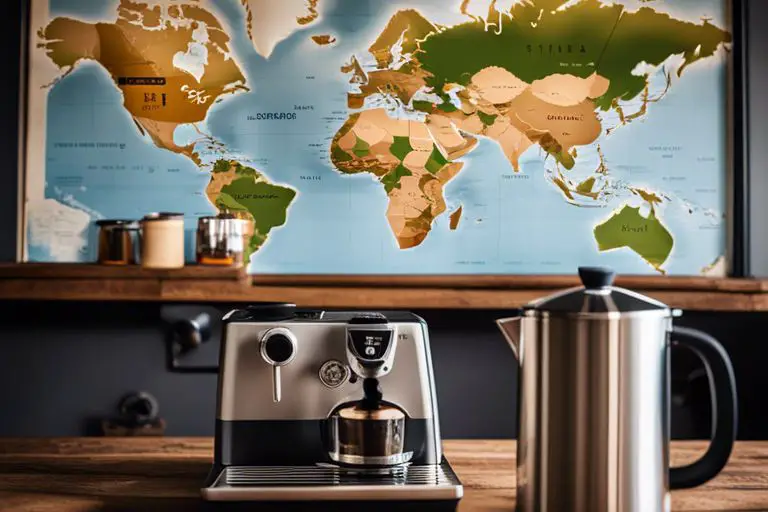Indubitably, the world of coffee is filled with a plethora of options, from blends to single-origin beans. But what sets single-origin coffee apart, and can you truly taste the difference? In this informative blog post, we will delve into the nuances of single-origin coffee and how it compares to blends. From the unique flavour profiles to the impact of terroir on the beans, we will explore the key factors that make single-origin coffee stand out. Whether you’re a coffee connoisseur or simply a curious coffee lover, understanding the potential differences in taste between single-origin and blended coffees can elevate your coffee experience.
Discover the distinctive characteristics of coffee from different regions and the subtle nuances that can make all the difference in your cup. Gain insight into the positive impact of single-origin coffee on local communities and the potentially dangerous consequences of climate change affecting coffee-growing regions. Join us as we navigate the complex world of single-origin coffee and uncover the truth behind its unique taste.
Key Takeaways:
- Single-origin coffee can showcase the unique flavour profile of a specific region or farm.
- The taste difference between single-origin and blended coffee can be noticeable to those with a discerning palate.
- Factors such as soil, climate, and altitude can influence the taste of single-origin coffee.
- Single-origin coffee provides the opportunity to support and appreciate the work of individual coffee growers.
- Exploring single-origin coffee can enhance the coffee drinking experience and broaden one’s understanding of the beverage.
The Characteristics of Single-Origin Coffee
Single-origin coffee refers to coffee that is sourced from a specific region rather than being a blend of beans from various locations. When it comes to the characteristics of single-origin coffee, there are distinct factors that contribute to its unique taste and quality. From terroir to harvesting and processing, each aspect plays a crucial role in defining the flavour profile of single-origin coffee.
Terroir and Taste
The concept of terroir, which encompasses the environmental factors such as soil, climate, and altitude of a specific region, has a significant impact on the taste of single-origin coffee. This unique combination of natural elements gives rise to distinctive flavours and aromas, allowing coffee enthusiasts to truly appreciate the nuances of different origins. Do you enjoy single origin coffees or blends?
In addition, the terroir of a region also influences the growing conditions of the coffee plants, affecting the overall quality of the beans. The individual characteristics derived from terroir give single-origin coffee a sense of identity and authenticity, making it a sought-after choice for those who value a unique and diverse tasting experience.
Harvesting and Processing Impact
The methods used in harvesting and processing single-origin coffee contribute significantly to its distinctive taste. Whether it is the meticulous hand-picking of ripe coffee cherries or the precise processing techniques, these practices directly influence the flavour and quality of the end product. By carefully managing the harvesting and processing methods, producers can extract the true essence of the beans, resulting in a rich and complex flavour profile.
Moreover, the purity of single-origin coffee allows for the preservation of specific taste characteristics that are often diluted in blended coffees. This emphasis on preserving the natural flavours gives single-origin coffee an unparalleled depth and intensity, providing a coffee drinking experience that is both exquisite and memorable.
Comparing Single-Origin to Blended Coffee
When it comes to choosing between single-origin and blended coffee, there are a few key differences to consider. For a more in-depth look at the comparison, you can check out Single Origin Coffee vs. Blend Coffee. Here, we’ll break down the information into a clear and concise table to help you make an informed decision.
| Single-Origin Coffee | Blend Coffee |
| Comes from a single geographical location | Combines beans from multiple locations |
Flavor Profiles
Single-origin coffees often have distinct flavour profiles that are unique to the region they come from. This can give consumers the opportunity to experience the nuanced tastes and aromas of a specific area. On the other hand, blended coffees may offer a more balanced and consistent flavour that appeals to a wider range of palates.
Perceptions and Expectations
When customers opt for single-origin coffee, they may have certain expectations regarding the taste and quality based on the reputation of the region. This can create a more personalised and immersive experience. Blended coffee, on the other hand, can be perceived as a reliable and consistent choice, especially for those who value a familiar flavour profile.
It’s important to note that individual preferences play a significant role in how single-origin and blended coffees are perceived. Some drinkers may prefer the complexity and diversity of single-origin options, while others may feel more comfortable with the consistency and reliability of blended coffees.
The Coffee Connoisseur’s Perspective
For the true coffee connoisseur, the choice of coffee beans is of utmost importance. Single-origin coffee, in particular, offers a unique taste profile that cannot be replicated by blends. This distinctiveness is highly valued by those who have developed a refined palate for coffee.
Expert Tasting Techniques
Seasoned coffee connoisseurs employ a variety of tasting techniques to fully appreciate the nuances of single-origin coffee. These may include the use of a coffee spoon to take in the aromas before sipping, as well as the process of slurping the coffee to distribute it across the entire palate. The goal is to engage all the senses in order to discern the subtle flavours and complexities within each cup.
The Role of Coffee Cupping
Coffee cupping is a formalised method of tasting and evaluating coffee. It involves deeply inhaling the coffee’s aroma, followed by loud slurping to aerate the coffee and spread it across the tongue. This approach allows for a comprehensive assessment of the coffee’s flavour, acidity, body, and aftertaste. Coffee cupping is crucial in discerning the unique qualities of single-origin coffees and is a standard practice in the world of professional coffee tasting.
During coffee cupping, multiple single-origin coffees are sampled side by side to compare their attributes and identify the most outstanding flavours. This process enables connoisseurs to identify the most outstanding and exceptional single-origin coffees, providing valuable insight for consumers seeking the highest quality coffee experiences.
Experimenting with Single-Origin Coffee
When it comes to exploring the world of single-origin coffee, the best way to truly appreciate the unique flavours and aromas is by experimenting with different brewing methods and origins. This allows you to understand the nuances and characteristics of each type of coffee bean, and to discover the distinct taste profiles that make single-origin coffee so special.
Home Brewing Methods
Home brewing methods play a crucial role in bringing out the full potential of single-origin coffee beans. Whether you prefer the precision of pour-over brewing, the convenience of a French press, or the rich flavour of espresso, each method can enhance and highlight the unique qualities of the coffee beans. By experimenting with different brewing techniques, you can uncover the diverse taste profiles and aromas that single-origin coffee has to offer.
Finding Your Favorite Origins
Exploring different origins is key to finding your favourite single-origin coffee. From the fruity and floral notes of Ethiopian coffee to the chocolatey undertones of Colombian beans, each origin has its own distinctive flavour profile. By sampling coffee from various regions, you can identify the characteristics that appeal to your palate and develop a deeper appreciation for the diversity of single-origin coffee.
Understanding the nuances of different origins can lead to a more fulfilling coffee experience, allowing you to appreciatethe diverse flavours and aromas that single-origin coffee has to offer. By experimenting with various brewing methods, you can unlock the full potential of single-origin coffee beans and discover your preferred taste profiles.
Can You Really Taste the Difference with Single-Origin Coffee?
In conclusion, it is evident that there is a noticeable difference in the taste of single-origin coffee compared to blends. The unique environmental conditions and soil composition of the specific region where the coffee is grown directly impact its flavour profile. From the fruity and floral notes of Ethiopian coffees to the chocolatey and nutty undertones of Colombian coffees, the distinct characteristics of single-origin beans are undeniable. Additionally, the transparency and traceability of single-origin coffee provide a level of assurance and authenticity that is often lacking in blended coffees. Therefore, for those with a discerning palate and a desire to appreciate the nuances of coffee, the answer is unequivocally yes – you can truly taste the difference with single-origin coffee.
FAQ
Q: Can You Really Taste the Difference with Single-Origin Coffee?
A: Yes, single-origin coffee has distinct flavour profiles that can be savoured due to the beans being sourced from a specific region, offering unique characteristics.
Q: What makes single-origin coffee different from blends?
A: Single-origin coffee is sourced from one location, allowing for a more pronounced taste specific to that region, whereas blends combine beans from various origins, resulting in a more balanced flavour.
Q: How does the region affect the taste of single-origin coffee?
A: The climate, soil, and altitude of the region impact the taste of the coffee beans, producing unique flavours and aromas characteristic of that specific area.
Q: Are there particular regions known for producing exceptional single-origin coffee?
A: Yes, regions such as Ethiopia, Colombia, and Kenya are renowned for their exceptional single-origin coffee, each offering distinct and desirable flavour profiles.
Q: What should I look for when trying single-origin coffee for the first time?
A: Look for coffees with clear labelling indicating the specific region they are sourced from, and consider trying a variety of regions to experience the diverse range of flavours single-origin coffee has to offer.




